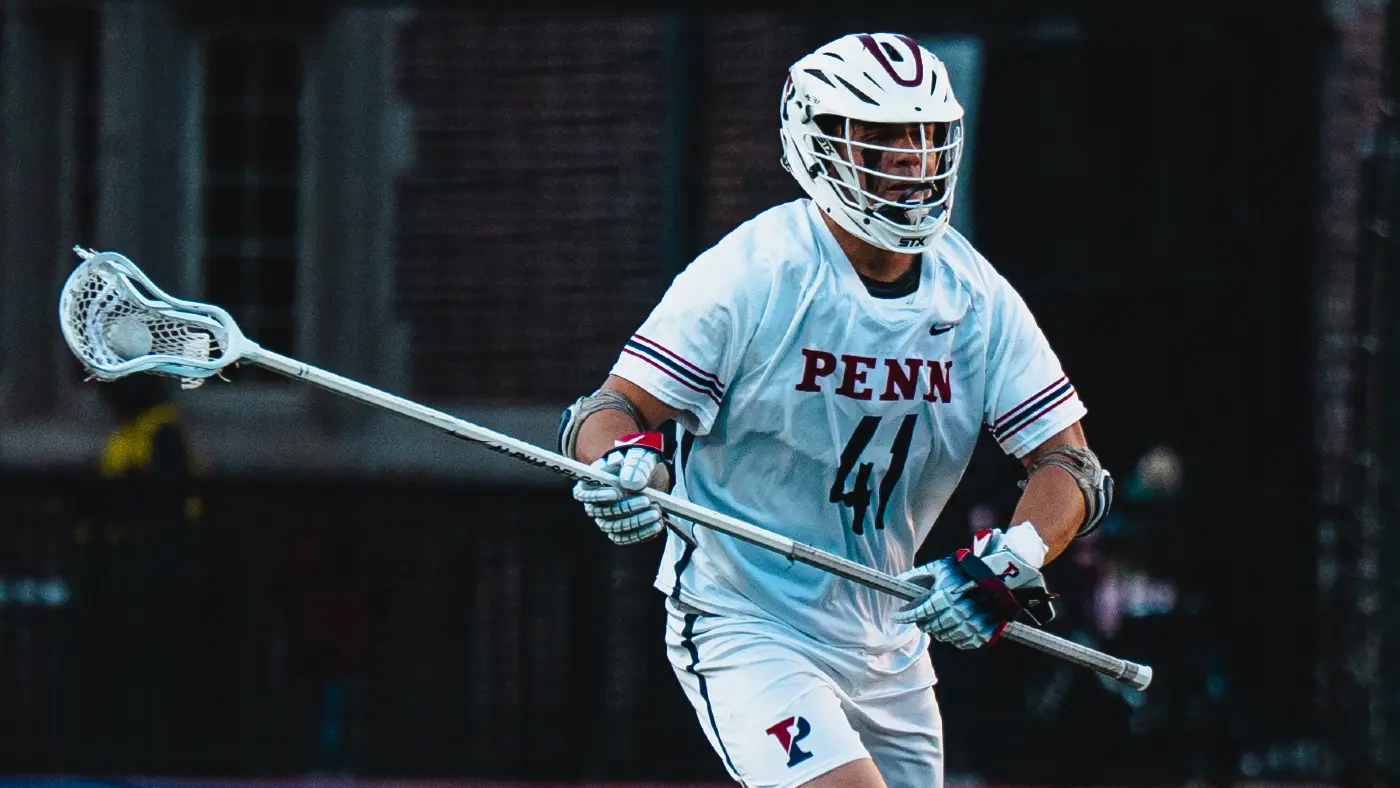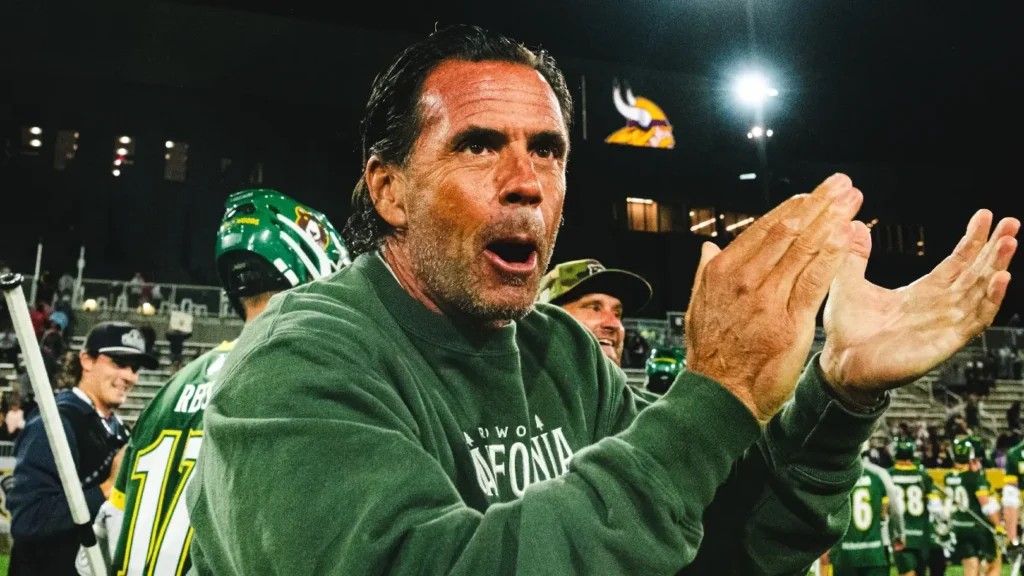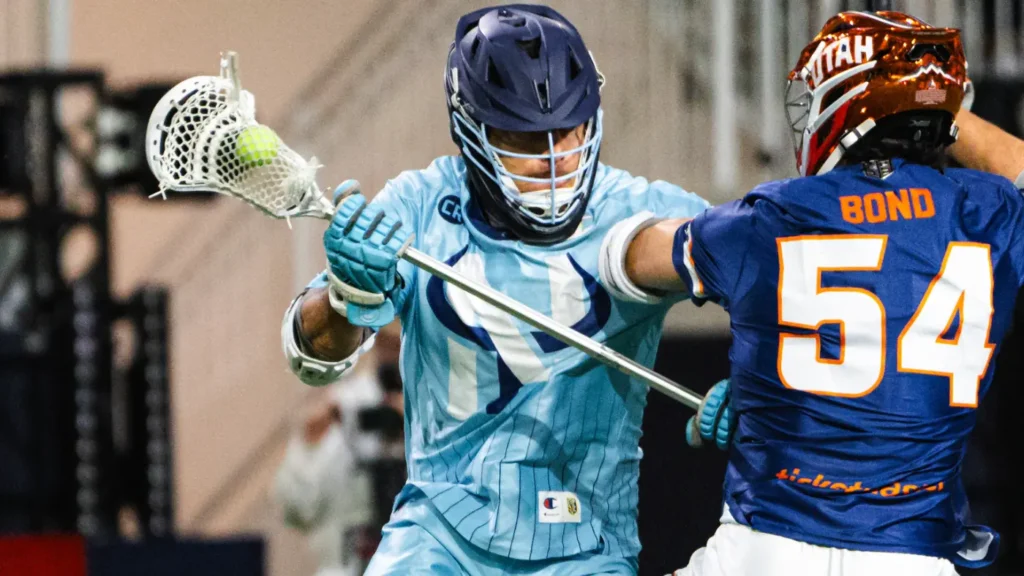
Evaluating Archers’ 2025 draft: Was trade up to No. 5 worth it?
By Zach Carey | May 8, 2025
Yet again, the Utah Archers staged a surprise on draft night. Instead of sitting tight at pick No. 8 in the first round, the Archers were aggressive, trading up to No. 5 to go get their guy: Brendan Lavelle.
They followed that up with a value selection, adding Harvard’s Sam King with the second pick in the third round. Utah then proceeded to take a swing with Richmond’s Mitchell Dunham at 21st overall and added a versatile offensive depth piece in Bryce Ford at pick No. 32.
The two-time defending champs have made a habit of pursuing the players they deem to be their guys in the draft. Lavelle and Dunham were unquestionably two of them. King, while filling a need as a versatile righty offensive player, was also a guy that was too good to pass up on at 18th overall.
With the draft in the books, here’s an initial look at what these four new additions bring to Utah:
Brendan Lavelle (Defense, Penn) - fifth overall
Lavelle was the best cover prospect in this draft class, plain and simple. In matchups against some of the best attackmen in lacrosse, he made a name for himself as a stopper the last two years. At 6 feet, 210 pounds, Lavelle is a thumper of a defender who can handle physicality and give it right back. His battles against CJ Kirst and Brennan O’Neill in 2024 and 2025 launched him up draft boards.
The Penn product is overwhelmingly physical at the point of attack. He wins by disrupting his opponents’ line to the cage. Lavelle can fight over picks by getting his hands on an attackman and bumping them off the pick. By absorbing contact well, he’s then able to go hunting for takeaway checks.
Lavelle’s ability in space against speedsters like Michael Sowers is the one uncertain part of his game at the next level. But he won’t be asked to guard those guys in the short term. He could also be perfectly fine doing so because, once he gets his hands on a guy, he’s hard to beat.
The Archers wanted Lavelle, and they got him for a low price of moving back five picks in the later rounds. That’s worth it because he is going to be a cornerstone of their defense moving forward.
Sam King (Attack, Harvard) - 18th overall
King was the best player available when the Archers came on the clock at 18th overall, and drafting him made sense. Utah wanted to add a right-handed offensive player to its lineup. With midfielders Andrew McAdorey, Sam English, Matt Traynor, Aidan Carroll and Mic Kelly all off the board, the Harvard attackman made the most sense despite not being the perfect positional fit.
King is a bit undersized at 5-foot-9, 174 pounds. Yet he makes up for it with his speed and his ability to change pace and direction. He can do everything, dodge from anywhere with either hand, feed from any angle and punish defenses from the outside, as well. He fits the mold of the ideal modern X attackman.
He likely won’t play that position for Utah, though. At least not immediately. There’s a world in which he moves to attack in the long term. In his rookie year, though, King projects to compete for a spot on the Archers’ 19-man roster to come out of the box as another player who’s awfully difficult to guard with a short stick.
King’s comfort dodging from almost anywhere on the field makes him work well within an Archers offense that already has a handful of players who can fit at either attack or midfield, including Matt Moore, Grant Ament and Tre Leclaire (and Tom Schreiber, if we’re being honest) on the righty side. He was a steal at 18th overall, and his potential will be reliant on how Utah uses him.
Mitchell Dunham (Defense, Richmond/Mount St. Mary’s) - 21st overall
Dunham is the classic Archers reach for a late-round defender that they really like. He likely would’ve gone undrafted if Utah hadn’t scooped him up. But, as the two-time defending champs with close to zero holes on the roster, the Archers can afford to go after their guy earlier than absolutely necessary.
Dunham is a 6-foot-5, 220-pound Canadian defender who spent one season in Richmond after playing the first three years of his career at Mount St. Mary’s. He’s a powerful lefty defender who can cause havoc as a caused-turnover machine and has potential to create in transition.
The Hamilton, Ontario, native attended Everest Academy prep school, a program that also produced fellow Archer Cam Wyers and the California Redwoods’ Owen Grant. Dunham also has played for Team Canada, most notably at the Fall Showcase in 2023.
With Lavelle, Mason Woodward, Graeme Hossack and Warren Jeffrey penciled in as starters and Wyers and Jon Robbins likely competing for a spot as a long-stick midfielder, Dunham’s immediate path to playing time is uncertain. Bottom line, though, Utah loves his potential, and it wanted to bring him in as a developmental piece for its defense.
Bryce Ford (Attack/Midfield, Maryland/Fairfield) - 32nd overall
Ford is an effective depth add to the Utah offense because of how versatile he is. The 5-foot-10 New York native is a speedy, two-handed player who starred as an attackman for Fairfield for four years (162 points across 46 games) before transferring to Maryland for 2025 and notching 15 points out of the box for the Terps this spring.
The Archers have suffered late-season injuries to offensive stars the last two seasons. If called upon, Ford provides value because he’s capable of filling in multiple spots. After Ryan Aughavin, Jack VanOverbeke, Jackson Morrill and Cole Williams signed elsewhere this offseason, Ford helps rebuild Utah’s bench.




